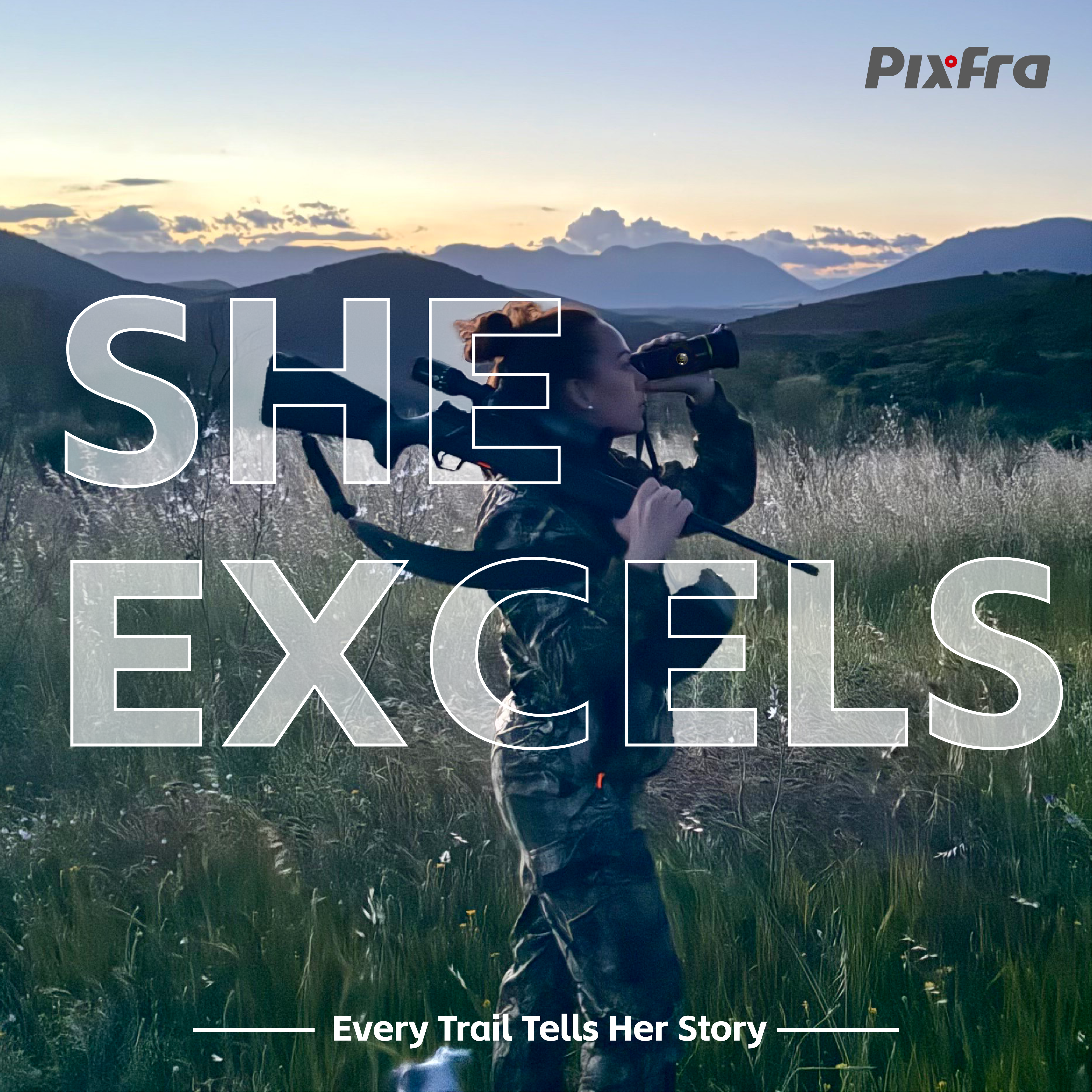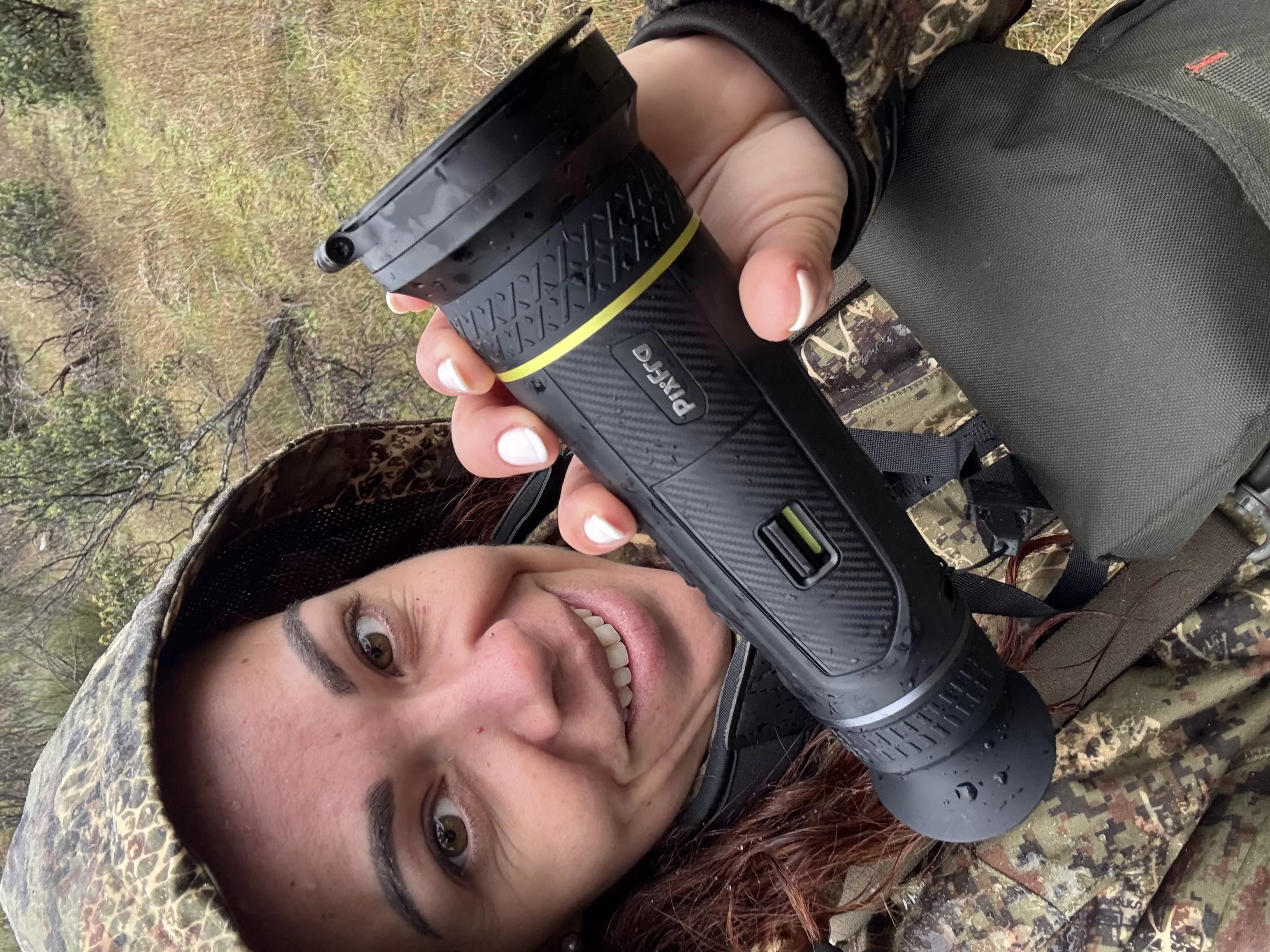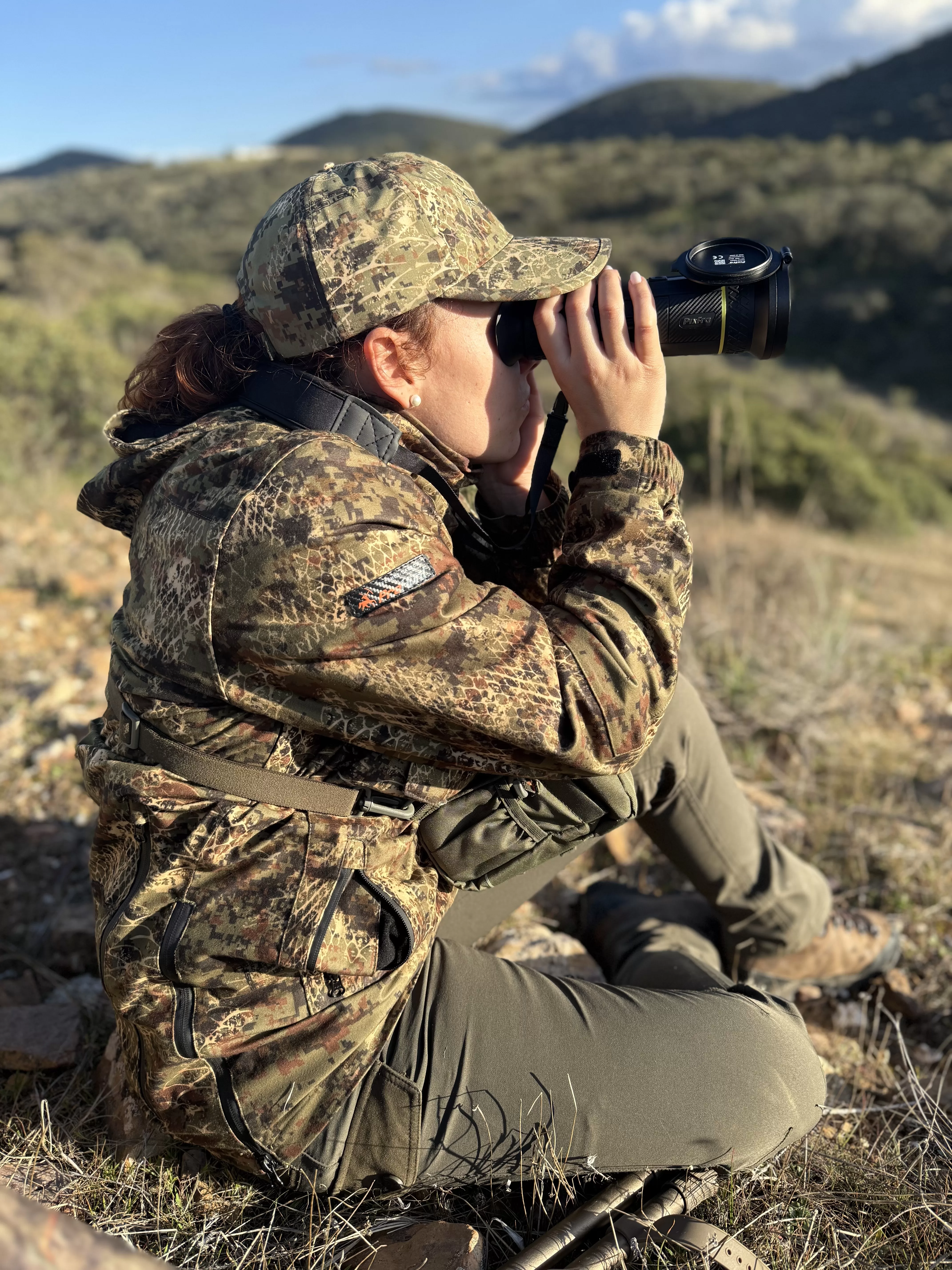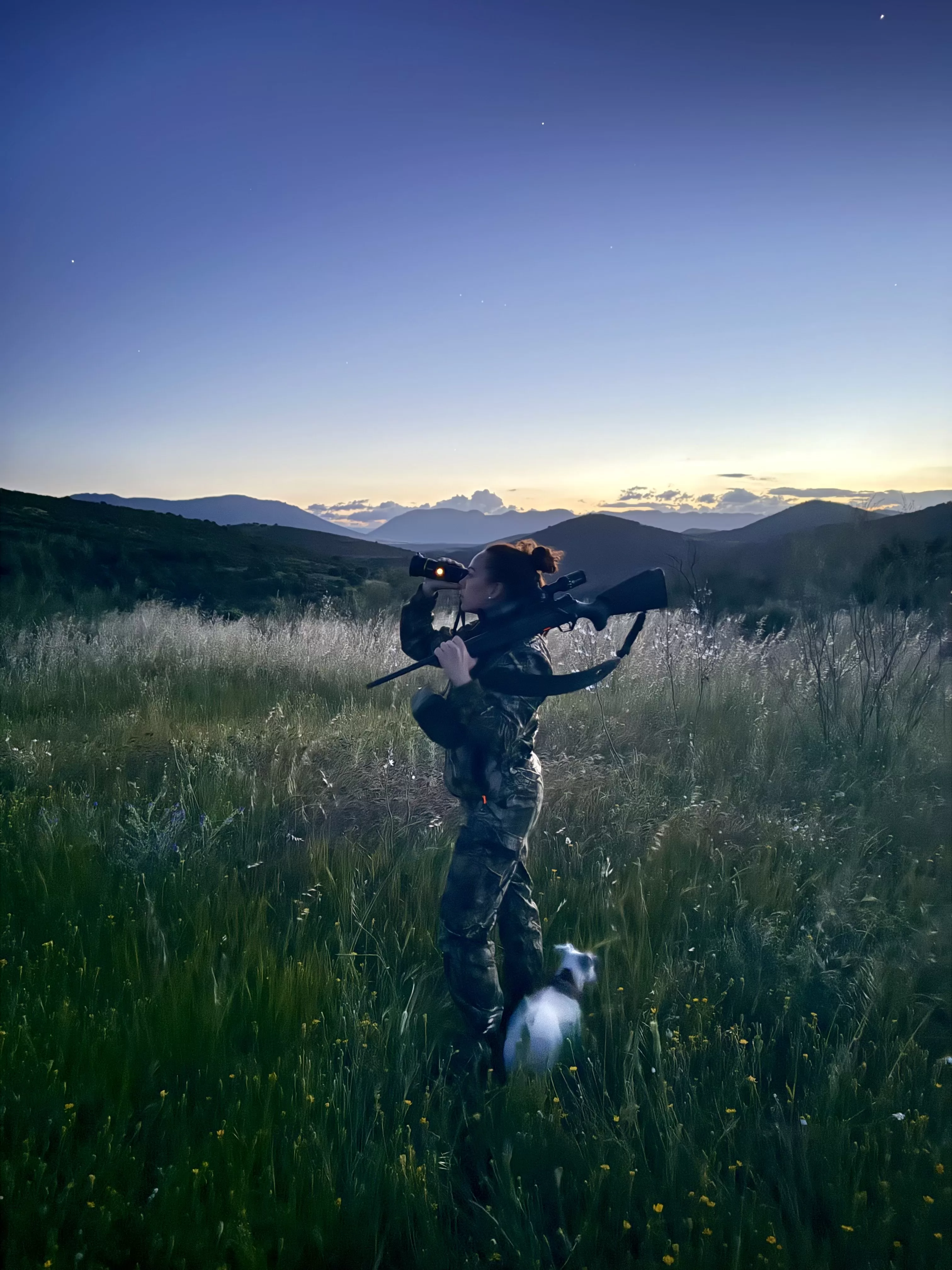There’s something magical about the stillness of a hunting night—the anticipation, the connection with nature, and the heightened senses that come with waiting patiently in the darkness. As an avid huntress specializing in big game hunting across Spain’s diverse terrains, I’ve experienced countless memorable moments in the wild. However, one particular evening stands out from all others, forever changing my perspective on modern hunting technology.
After several uneventful hours during a wild boar wait, the forest seemed empty and silent. The cool night air carried no sounds of movement, and I began to wonder if my patience would go unrewarded. Almost as an afterthought, I raised my Pixfra Sirius thermal monocular to scan the surroundings—and what I discovered sent a jolt of adrenaline through my entire body.
The thermal screen revealed what my human senses had completely missed: a group of wild boars had silently positioned themselves directly behind me. They had approached with such stealth that not a single twig snap or rustling leaf had betrayed their presence. Without the thermal technology, I would have remained completely unaware of their remarkable infiltration.
Bridging Traditional Skills with Modern Thermal Technology
For generations, hunting has been about honing natural instincts and traditional skills passed down through families and communities. While these fundamentals remain irreplaceable, today’s hunting landscape is evolving with technology that complements rather than replaces these ancestral abilities.
The thermal monocular has become an extension of my senses rather than a substitute for them. It respects the tradition while acknowledging that even the most experienced hunters face limitations in what human perception can detect—especially in challenging environments or low-light conditions.
According to a 2024 European Hunting Association survey, more than 78% of professional hunters now incorporate some form of thermal technology into their hunting practices, with most reporting significant improvements in both hunting success and animal identification accuracy.
Quality That Makes a Difference in the Field
What separates exceptional thermal equipment from merely adequate options becomes immediately apparent in real-world hunting scenarios. The Sirius thermal monocular’s capabilities have consistently impressed me with features that make tangible differences in the field:
| Feature | Benefit in Real Hunting Scenarios |
|---|---|
| High-sensitivity sensor | Detects heat signatures at remarkable distances |
| Multiple color palettes | Adapts to different environments and personal preferences |
| Comfortable ergonomics | Remains comfortable during extended use |
| Intuitive controls | Allows quick adjustments without taking eyes off the target |
| Variable zoom levels | Provides flexibility for different hunting situations |
The clarity and precision offered by quality thermal imaging has transformed not just my success rate but also my entire approach to hunting. I now observe and understand animal behavior in ways previously impossible, adding new dimensions to the hunting experience.
Enhanced Observation and Ethical Hunting
While many discussions about hunting technology focus on increased success rates, I’ve found the most profound impact comes in the form of improved ethical hunting practices. The ability to clearly identify animal species, assess their size and condition, and determine precise shot placement represents a significant advancement for responsible hunting.
During that memorable night when I discovered the wild boars behind me, though I didn’t have time to take a shot, I was treated to a rare, intimate view of their natural behavior—something few hunters ever witness. The thermal monocular revealed details of their social interactions and movements that would have remained invisible to the naked eye.
This observation aspect has deepened my connection to the animals I hunt and the ecosystems they inhabit. Understanding their patterns and behaviors through enhanced observation makes me a more knowledgeable and effective conservationist, not just a more successful hunter.
Versatility Across Hunting Conditions
One aspect of thermal technology that particularly stands out is its versatility across different hunting environments and conditions. Unlike traditional optics that may excel in specific situations but falter in others, quality thermal imaging provides consistent performance regardless of:
- Time of day (complete darkness to full daylight)
- Weather conditions (fog, light rain, partial obstructions)
- Terrain variations (forests, open fields, brush)
- Target distances (close-range to impressive distances)
This adaptability means I carry fewer specialized pieces of equipment and can confidently hunt in a wider range of conditions. Before discovering thermal technology, certain hunting scenarios—particularly in dense forest at night—presented significant challenges that often limited success.
The Learning Curve: Accessibility for All Skill Levels
”The best technology doesn’t just perform well—it feels intuitive from the first use while revealing new capabilities as you grow with it.”
Despite the sophisticated technology inside, I found the learning curve with the Sirius monocular surprisingly gentle. The interface prioritizes functionality without overwhelming the user with unnecessary complexity—a crucial consideration when you need to make quick decisions in the field.
For hunters considering thermal technology, this accessibility means you can begin benefiting from its core functions immediately while gradually exploring its more advanced capabilities as your experience grows. Unlike some hunting technologies that require extensive training before delivering value, thermal imaging provides immediate benefits while still offering depth for technical enthusiasts.
A New Essential in the Modern Hunter’s Kit
What began as a recommendation from a hunting friend has transformed into an essential component of every hunting expedition I undertake. The thermal monocular now joins my rifle, ammunition, and hunting knife as equipment I wouldn’t consider leaving behind.
This transformation wasn’t immediate—I approached thermal technology with the healthy skepticism that experienced hunters often apply to new innovations. However, after experiencing its capabilities firsthand across numerous hunting scenarios, its value became undeniable.
For those still considering whether thermal technology deserves a place in their hunting kit, I recommend experiencing it firsthand rather than relying solely on specifications or marketing materials. The practical applications in real hunting scenarios tell a more compelling story than any technical description could convey.
Conservation Through Technology
An often overlooked benefit of advanced thermal technology is its contribution to conservation efforts. By allowing hunters to:
- Accurately identify species before taking shots
- Locate wounded animals more effectively
- Monitor wildlife patterns without disturbance
- Contribute to population surveys through observation
These capabilities align modern hunting more closely with conservation principles, helping ensure sustainable practices that preserve hunting traditions for future generations.
Conclusion
The night I discovered wild boars silently watching me from behind marks just one chapter in my ongoing journey with thermal technology. Since then, countless successful hunts and remarkable wildlife observations have reinforced my appreciation for how this technology enhances the hunting experience while respecting its traditional essence.
For hunters considering incorporating thermal imaging into their equipment arsenal, I can offer this perspective: it doesn’t replace the fundamental skills and knowledge that define good hunting—it elevates them, extending human capabilities in ways that deepen our connection to the hunt rather than diminishing it.
Whether you’re tracking wild boar through Spanish forests or pursuing other game in different terrains, the right thermal technology offers a window into aspects of hunting previously hidden from human perception. And in that revelation lies not just improved success, but a richer, more complete hunting experience.
Are you interested in experiencing the difference that quality thermal imaging can make in your hunting adventures? Visit pixfra.com to explore the full range of Pixfra thermal products designed specifically for hunting applications, or email info@pixfra.com to discuss which options might best suit your specific hunting needs.








